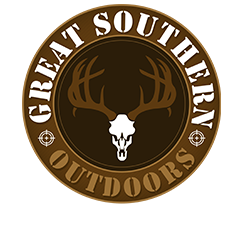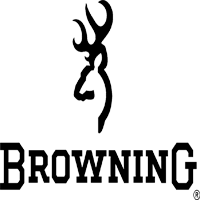The Importance of Antlerless Harvest
The definition of antlerless harvest and its importance
Antlerless harvesting is the removal of deer without antlers, usually via hunting. The term includes both male and female deer but most often refers to females. The practice is controversial, but many states allow it to control the deer population. One of the main arguments for antlerless harvesting is that it helps to keep the population healthy by preventing overgrazing. Additionally, it can reduce the number of car accidents involving deer, as well as the spread of diseases like Chronic Wasting Disease. Some people argue that antlerless harvesting is a form of animal cruelty, but most hunters argue that it is a necessary tool for wildlife management.
The benefits of antlerless harvest
One of the most controversial topics in wildlife management is the harvest of female deer or does. Does are typically considered off-limits by hunters, as they are the reproductive engine of the deer population. However, there are some benefits to harvesting, particularly in areas where the deer population is high. One advantage is that it can help improve the herd’s overall health. Food and other resources become limited when the population is too dense, leading to malnutrition and disease. By thinning out the pack, does can be harvested without harming the overall health of the deer population. Additionally, antlerless harvest can help stabilize the herd’s age structure. For example, if too many mature bucks are harvested, the resulting spike in doe numbers can lead to over browsing and habitat degradation. In contrast, a healthy mix of young and old deer helps to ensure that the forest remains healthy and productive. Therefore, antlerless harvest can be a valuable tool for wildlife managers in conjunction with other management strategies.
How to properly go about antlerless harvest
To ensure the health of the deer herd and the future of hunting, it is essential to go about antlerless harvest properly. The first step is to contact your state wildlife agency to learn about the specific regulations in your state. Once you have obtained the necessary permits, you will need to choose a method of harvest. The most common forms are either shooting or trapping. When selecting a plan, be sure to consider the size of the animal and the surrounding environment. Once the animal has been harvested, it is essential to properly process the meat. This includes cleaning and wrapping the heart as well as storing it in a cool, dry place. By following these steps, you can help to ensure a successful antlerless harvest.
The difference between male and female deer
Male and female deer have some distinct physical differences. The most obvious is that males have antlers, while females do not. Males also tend to be larger than females, with bigger bodies and longer legs. In addition, male deer tend to have darker fur, while female deer tend to be lighter in color. Finally, male deer tend to be more aggressive than females, making them more likely to defend their territory or fight other males. While these physical differences can help identify the gender of a deer, they are not always reliable. For example, some females may grow small antlers, and some males may have lighter fur.
The best way to determine the gender of a deer is to look at its genitalia. Male deer have antlers for two reasons: to attract mates and to intimidate other males. The size and shape of a male’s antlers are determined by its genes, and the amount of time it spends shedding and growing new antlers each year is determined by the amount of daylight (and consequently the season). Male deer use their antlers for sparring with other males during the breeding season to assert their dominance and win the right to mate with females.
After the breeding season ends, males shed their antlers and grow new ones. Females do not grow antlers because they do not need them for mating purposes. Instead, they use their sense of smell to choose a mate. Females also use their sense of smell to communicate with their young and identify potential predators. In addition, females often form small herds with other females and their young. These herds protect from predators and allow females to care for their young cooperatively.
While there are some notable physical differences between male and female deer, they are generally similar in appearance. Both sexes have four-chambered stomachs that allow them to digest plants efficiently, and both grow new teeth every year. In addition, both sexes rely heavily on their sense of smell for communication and navigation. However, there are some behavioral differences between the sexes. For example, males are typically more territorial than females and are more likely to engage in aggressive behavior, such as fighting other males or attacking humans. On the other hand, females tend to be more nurturing towards their young and more cautious around potential threats.Despite these physical and behavioral differences, male and female deer are both essential for thespecies’ survivals. Without males, there would be no reproduction; without females, there would be no offspring to carry on the species. In addition, both sexes play essential roles in their respective herds or packs. Males typically serve as protectors against predators, while females usually provide care for young. Together, male and female deer form a strong team that helps ensure the species’ survival into future generations.
Why does the size of the rack matter when it comes to harvesting them
When it comes to harvesting racks, size does matter. The larger the rack, the more area there is for the blades to catch the wind. This means that larger racks can generate more power with each rotation. Additionally, larger racks tend to be more stable in the wind, meaning that they are less likely to break or tip over. As a result, large-scale wind farms typically use towers with very large racks in order to maximize the amount of power that can be generated. However, this is not to say that smaller racks are completely useless. In many cases, smaller racks can be just as effective as larger ones, and they have the added benefit of being easier and cheaper to construct. Ultimately, the decision of whether to use large or small racks depends on a variety of factors, including the amount of wind available and the size of the area that needs to be covered.
Does age play a role in how big the deer are
In the state of Pennsylvania, deer grow to an average size of four feet tall and six feet long. The record for the biggest deer ever killed in Pennsylvania was a ten-point buck that weighed in at two hundred and thirty pounds. Does age play a role in how big the deer are? The answer is yes. Bucks grow faster than does during their first two years of life. After that, they continue to grow at a slower rate until they reach their full size at five or six years old. A doe reaches her full size at three or four years old. So, does age play a role in how big the deer are? The answer is yes, bucks grow faster than does during their first two years of life, and then they continue to grow slowly until they reach their full size.
Antlerless deer are an important part of the ecosystem and provide many benefits. Harvesting them in a responsible way can help keep populations healthy and thriving. If you’re interested in hunting antlerless deer, make sure you understand the regulations in your state and how to properly go about it. Knowing the difference between male and female deer is also key when making decisions about harvesting; males typically have larger racks than females. Age also plays a role in rack size, with older bucks tending to be bigger than younger ones. So if you’re looking for a big buck, don’t overlook those young ones!



